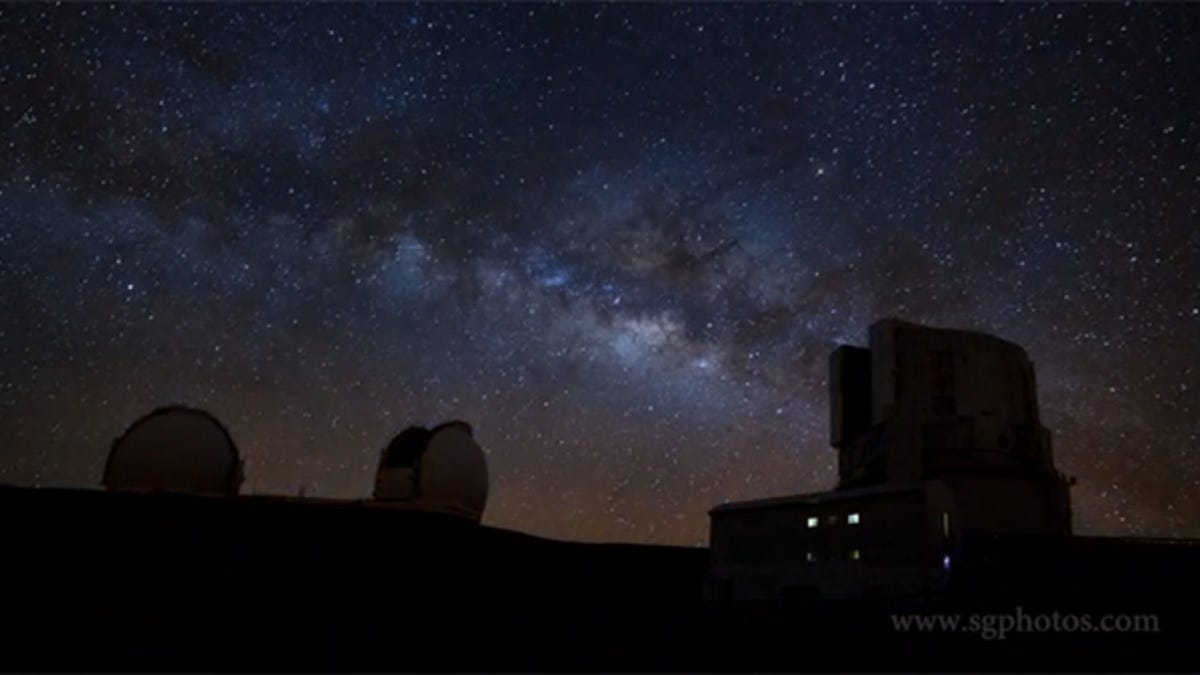Mauna Kea time lapse shows the grandeur of the heavens
Photographer Sean Goebel has created a beautiful time lapse of the skies over Mauna Kea in Hawaii — and its observatories in action.

(Screenshot by Michelle Starr/CNET Australia)
Photographer Sean Goebel has created a beautiful time lapse of the skies over Mauna Kea in Hawaii — and its observatories in action.
We're never going to get tired of night-sky time lapses.
The top of Hawaiian volcano Mauna Kea is one of the best locations around the globe for observing the night sky and is home to a series of telescopes and observatories. It also provided a wonderful opportunity for Sean Goebel — photographer and graduate student in astrophysics at the University of Hawaii.
Over seven nights, three in April and four during the Northern Hemisphere summer, Goebel managed to shoot a stunning time lapse of the facility and the sky above it. During April, he was working as an observer on the James Clerk Maxwell Telescope, going outside to shoot when he needed a break from the telescope; in the summer, he returned with his equipment to finish the job.
Using a Canon 5D Mk II and a Canon EOS 350D with a variety of lenses, Goebel spent about five hours filming each scene. Using two cameras meant that he could capture two scenes per night, carefully timed around when the telescopes were doing the most interesting things — that is, shooting lasers into the night sky.
These, Goebel explained, are used to correct the effect of atmospheric distortion — a technology called adaptive optics. "Just as waves of heat coming off pavement blur out the detail in faraway objects, winds in the atmosphere blur out fine detail in the stars/galaxies/whatever is being observed," he wrote on his website. "This is the reason that stars twinkle. The laser is used to track this atmospheric turbulence, and one of the mirrors in the telescope bends hundreds of times per second in order to cancel out the blurring. Adaptive optics is pretty cool and was the topic of my first eight-month research project in graduate school."
But timing the shooting schedule around the telescope activity seemed to be the least of Goebel's problems. The peak of Mauna Kea stands at an altitude of 4200 metres, which is approaching dangerous altitude levels.
"Essentially everyone suffers from altitude sickness," Goebel said. "Children, obese people and the elderly are discouraged from going to the summit at all. All the observatories have oxygen bottles. It's not uncommon for tourists to step out of their vehicles and immediately pass out. Going from sea level to 14,000 feet in the span of a couple hours will do that to you. It's one thing to go to the summit for half an hour to watch sunset, which is what the tourists do, but it's quite another to stay up there for seven hours while massively sleep deprived and freezing cold. We stopped at the visitor centre (at an altitude of 9200 feet) for an hour while driving up in order to acclimate. This certainly helped, but generally by halfway through the night, everyone would have headaches. I'm in good shape (and have backpacked to higher locations than Mauna Kea), but I've had my vision fade out, have lost my balance and/or have needed to stop to catch my breath while hiking around at night."
While we can't say we're glad he got sick, we're certainly glad he finished the job. His time lapse is absolutely mesmerising — the dance of the galaxy combined with the robotic movements of the telescopes and the lasers, shooting up into the darkness.
You can read more about Goebel's process on his website.
Via sgphotos.com

